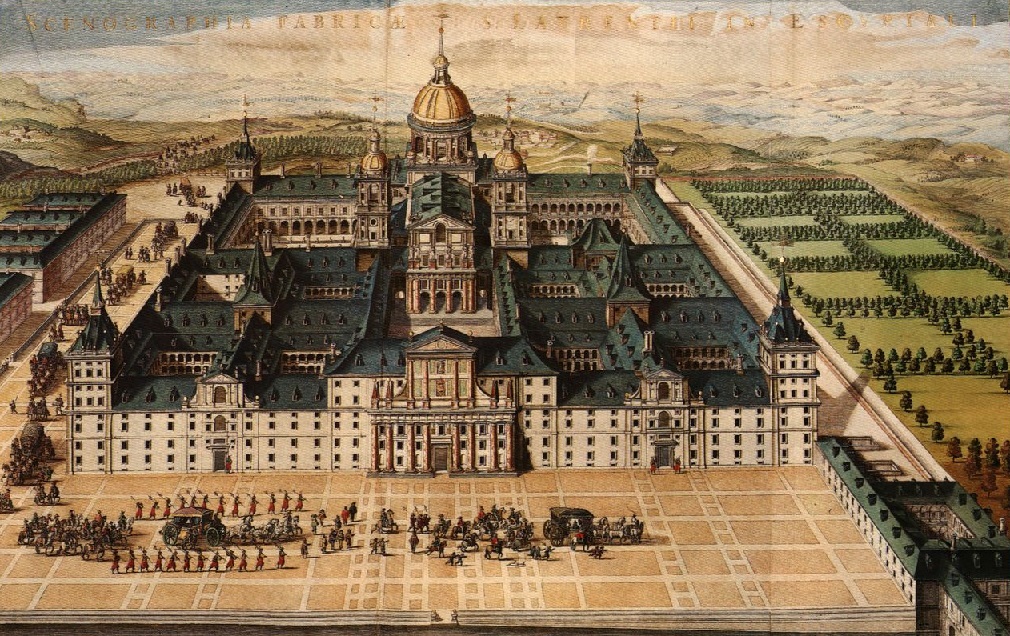
King Philip II's Problems

Introduction
Philip II of Spain ruled the greatest empire the world had ever known.
Philip was a devout Catholic. He believed that it was his duty to rule fairly and to care for his subjects. He was hard-working and patient.
Spanish troops had destroyed the Aztec and Inca empires in the New World. Philip's cousin, Rudolph, was ruler of Austria-Hungary and Emperor of Germany. In addition, the Pope was a friend of Spain.
When Philip conquered Portugal in 1580, his empire included almost all of the explored world. Philip ruled his vast empire from the palace that he built at Escorial, near Madrid.
After you have studied this webpage, answer the question sheet by clicking on the 'Time to Work' icon at the top of the page.
Links:
The following websites will help you research further:
King Philip II of Spain:
•
History Learning Site
•
Heritage History Site - old textbooks
1 Spain's Empire in 1580
1 Spain. 2 Portugal. 3 The Netherlands. 4 Franche Comte (in Germany). 5 Milan and Naples in Italy. 6 Sicily and Sardinia. 7 Florida in North America. 8 Mexico.
9 Cuba, Hispaniola and many islands in the West Indies. 10 Venezuela, Peru, Chile and Brazil in South America. 11 Angola and Mozambique in Africa and the island of Madagascar.
12 Colonies in India and Ceylon. 13 Oman in Arabia. 14 The Philippines and other islands in Indonesia.

King Philip's Problems
King Philip faced many problems. These are some of them:
1 In 1572, Protestants in the Netherlands rebelled against Spain. Elizabeth I of England sent troops and money to the Dutch rebels.
2 The rulers of the Ottoman (Turkish) Empire were enemies of Spain. In 1580, England signed a trade treaty with Turkey.
3 France was an enemy of Spain. In 1581 the Duke of Anjou led a French army to help the Dutch, and signed a marriage treaty with Elizabeth I of England.
4 England was an enemy of Spain. In 1581, England had laws forbidding the Catholic religion.
5 It was difficult to rule the huge empire. It took Philip months to reply to letters.
6 English 'privateers' (pirates such as Sir Francis Drake) attacked Spanish treasure ships.
7 Dutch 'sea beggars' (pirates) attacked Spanish ships. Elizabeth I allowed them to use English ports.
8 English and Dutch traders took enslaved people to Spain's colonies in America. Philip had ordered that only Spanish ships could trade with the New World.
9 In 1568, three Spanish treasure ships sheltered from a storm in Southampton, England. Elizabeth I confiscated them.
10 In 1569, the Spanish Moriscos – Muslims who had become Christians – rebelled. Philip expelled them from Spain.
11 In Spain there were a few Protestants. Philip had them burned at the stake.
12 Because it cost Philip so much to keep the Spanish army in the Netherlands, he often had money troubles.
13 In 1587, the English set up a colony in North America, called Virginia after Elizabeth I (the Virgin Queen).
14 In 1587, the English privateer Sir Francis Drake attacked the port of Cadiz in Spain.
15 In 1580, Philip invaded Portugal. Don Antonio, his Portuguese rival, escaped to England. Elizabeth I promised to help him attack Philip.
16 In 1587, Elizabeth I of England executed Mary, Queen of Scots, for plotting to take the throne of England. Mary was a Catholic who had made Philip her heir.
2 Philip's Palace at the Escorial, Madrid
Compared to the splendour of the monarchy of Philip II, declared the British Maritime Museum's 1988 tercentenary Armada exhibition, the small, pirate 'rogue' nation of Elizabeth's England was merely 'lightly gilded savagery'. This embroidery of Philip's magnificent palace gives some idea of how wealthy and civilised the Spanish court was.
